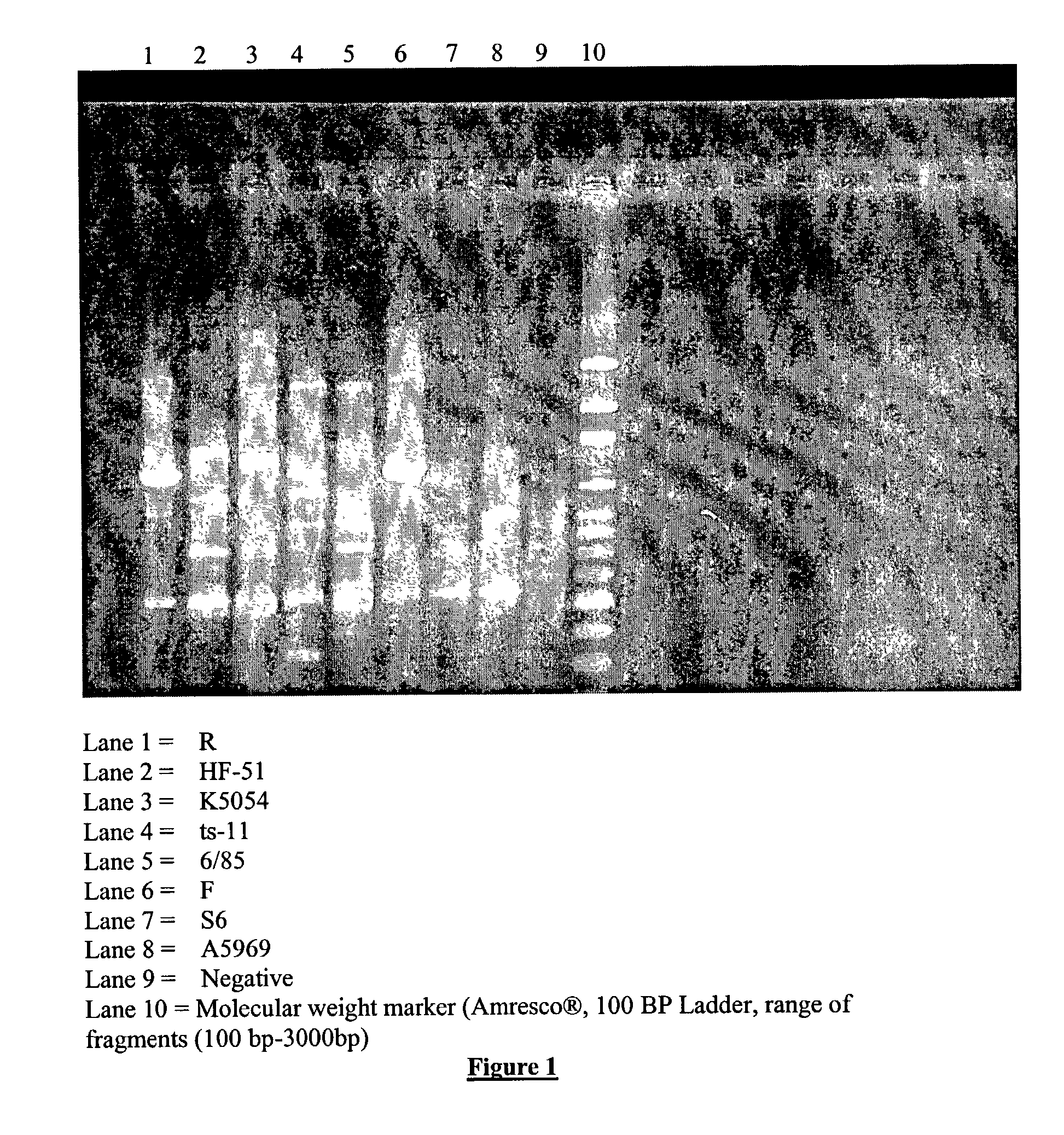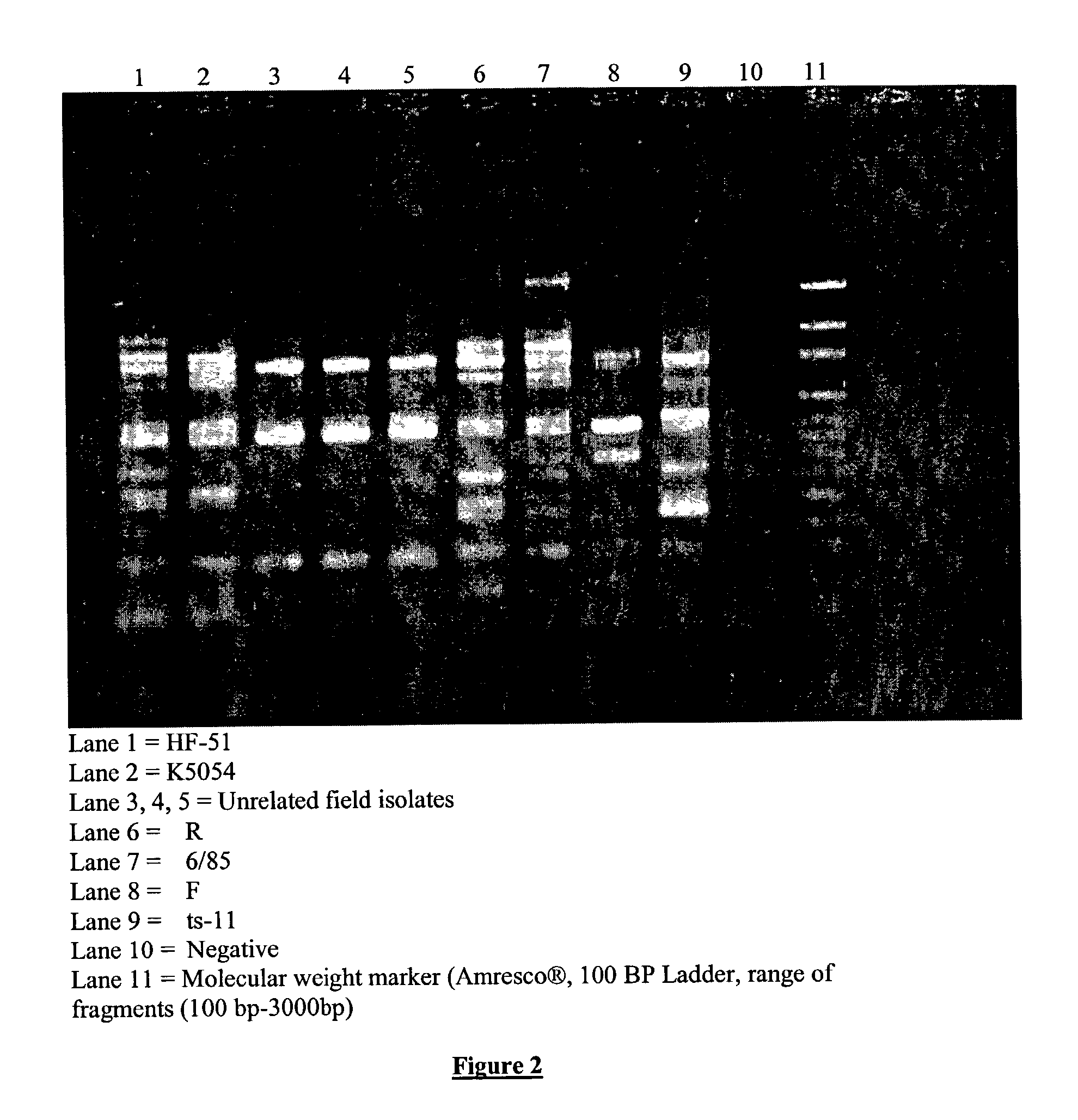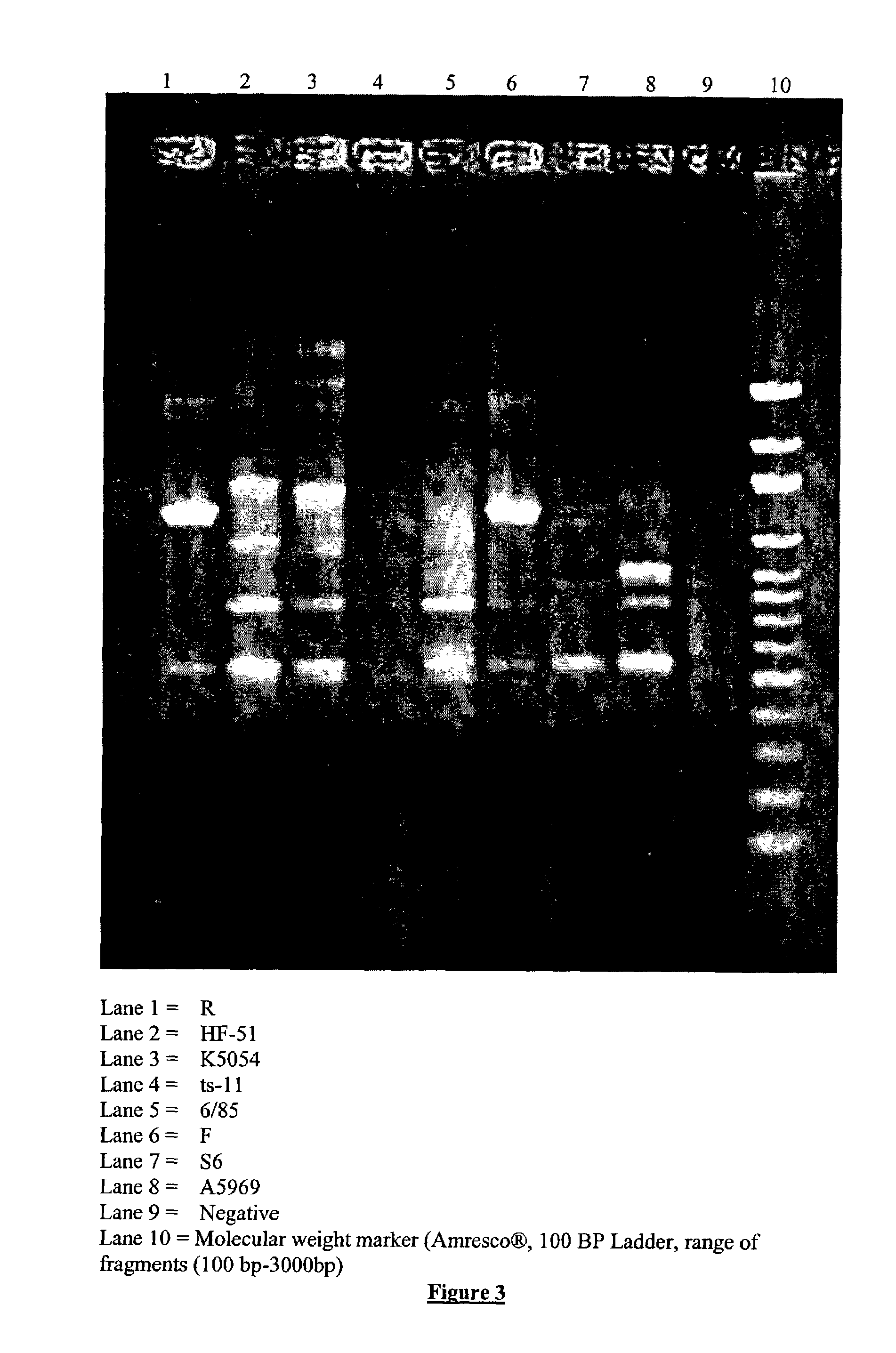Mycoplasma gallisepticum formulation
a technology of mycoplasma gallisepticum and protective formulation, which is applied in the field of poultry protection, can solve the problems of reducing the egg production of breeders and layers, the lack of specificity and sensitivity in all, and the upper respiratory disease of game birds
- Summary
- Abstract
- Description
- Claims
- Application Information
AI Technical Summary
Benefits of technology
Problems solved by technology
Method used
Image
Examples
example i
Turkey Bioassay
[0065]Susceptible turkeys were inoculated with sinus exudate from four different affected commercial turkey flocks. An MG isolation was made from one of the exudates used to challenge the turkeys, it was designated K5054.
[0066]Turkeys challenged with sinus exudate from one of the farms (K5054) had very mild clinical signs (one of eight turkeys developed a unilateral sinusitis 42 days post-inoculation) and mild lesions; they seroconverted and developed immunity to subsequent challenge with a virulent MG strain.
example ii
Trial A
[0067]Four groups of 8 turkeys were challenged with sinus exudate collected from affected commercial turkeys on 4 different farms, one farm having K5054 exudate. A fifth group served as negative controls. The turkeys were observed for clinical signs, bled for serology, and tracheal swabs were obtained for mycoplasma culture. The results of this experiment are shown in FIG. 4.
[0068]At 49 days post-challenge, the K5054 sinus exudate inoculated birds (8 principals) were co-mingled with susceptible turkeys (8 contacts). They were observed for clinical signs, bled for serology, and tracheal swabs were obtained for mycoplasma culture after co-mingling. Two of the contact turkeys were necropsied 56 days post-challenge.
[0069]The group inoculated with K5054 sinus exudate was the only group that seroconverted. They were positive at 21 days post inoculation and remained positive until the end of the study. One of eight turkeys inoculated with K5054 sinus exudates exhibited a unilateral ...
example iii
[0072]Inoculation with K5054 sinus exudate resulted very little clinical reaction in the turkeys in the bioassay. To further explore the safety of the K5054 strain preliminary investigations were conducted in chickens and turkeys. The birds were challenged by coarse spray with K5054 propagated in Frey's medium.
[0073]K5054 challenge in chickens and turkeys resulted in seroconversion with few indications of disease.
Trial 1: Safety in Chickens
[0074]Commercial layer-type chickens were challenged with K5054 by coarse spray, ts-11 and R strain. They were evaluated by serology, gross evaluation of air sac lesions and measurement of the thickness of the tracheal mucosa 10 days post challenge. The results of this experiment are depicted in FIG. 6, and FIG. 7.
[0075]
Experimental DesignNumber ofGroupBirdsChallenge MethodTiter (ccu / ml)Ts-1116Eyedrop1.11 × 104K505416Coarse spray1.59 × 108R16Coarse spray1.91 × 108Negative16NANAControls
[0076]The Ts-11 and K5054 groups both resulted in no gross air ...
PUM
| Property | Measurement | Unit |
|---|---|---|
| droplet size | aaaaa | aaaaa |
| droplet size | aaaaa | aaaaa |
| time | aaaaa | aaaaa |
Abstract
Description
Claims
Application Information
 Login to View More
Login to View More - R&D
- Intellectual Property
- Life Sciences
- Materials
- Tech Scout
- Unparalleled Data Quality
- Higher Quality Content
- 60% Fewer Hallucinations
Browse by: Latest US Patents, China's latest patents, Technical Efficacy Thesaurus, Application Domain, Technology Topic, Popular Technical Reports.
© 2025 PatSnap. All rights reserved.Legal|Privacy policy|Modern Slavery Act Transparency Statement|Sitemap|About US| Contact US: help@patsnap.com



